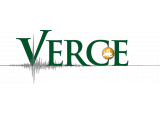You are here
VERCE
Virtual Earthquake and seismology Research Community e-science environment in Europe
Starting date:
01/10/2011
End date:
30/09/2015

A first novel aspect of VERCE consists of integrating a service-oriented architecture with an efficient communication layer between the Data and the Grid infrastructures, and HPC. A second novel aspect is the coupling between HTC data analysis and HPC data modelling applications through workflow and data sharing mechanisms.
Framework Programme:
FP7
General notes:
The Objectives of the project are the following:
- Provide to the Virtual Earthquake and seismology Research Community in Europe, a data-intensive e-Science environment - based on a service-oriented architecture - integrating a number of specialized services, tools, data-flow and work-flow engines, to support the data-intensive applications of this community and beyond to the EPOS community.
- Provide a framework wrapping the seismology data-infrastructure resources and services with a set of distributed data-aware Grid, Cloud and HPC resources provided by the European e-infrastructures and the community.
- Productise a core of pilot data-intensive applications and use cases of the Virtual Earthquake and seismology Community of research in Europe that exemplify the power of the platform architecture and its capabilities.
- Deliver a scientific gateway providing a unified access, management and monitoring of the platform services and tools, domain specific interfaces supporting the coevolution of research practices and their supporting software.
- Deliver an 'intellectual ramp' providing safe and supported means for researchers and users of the community at large to advance to more sophisticated data use through tailored interfaces and facilitators integrated within the scientific gateway.
- Deliver a 'research-methods ramp' through a toolkit of training programs for data intensive research - composed as a set of training session material, demonstrators, and best practice guides - based on tailored use-case scenarios and productised data-intensive applications of the community.
- Provide a collaborative environment between the earthquake and seismology research community and the computer scientists, system architects and data-aware engineers, fostering the emergence of 'research technologists' with sustained mastery for data-handling methods and a thorough understanding of the research goals.
Url:
Partners:
- Centre National de la Recherche Scientifique (CNRS-INSU, FR)
- The University of Edinburgh (UEDIN, UK)
- Koninklijk Nederlands Meteorologisch Instituut (KNMI-ORFEUS, NL)
- Euro-Mediterranean Seismological Centre (EMSC, FR)
- Istituto Nazionale di Geofisica e Vulcanologia (INGV, IT)
- Ludwig-Maximilians-Universitaet Muenchen (LMU, DE)
- The University of Liverpool (ULIV, UK)
- Bayerische Akademie der Wissenschaften (BADW-LRZ, DE)
- Fraunhofer-Gesellschaft zur Foerderung der Angewandten Forschung E.V. (SCAI, DE)
- Consorzio Interuniversitario Cineca (CINECA, IT)
